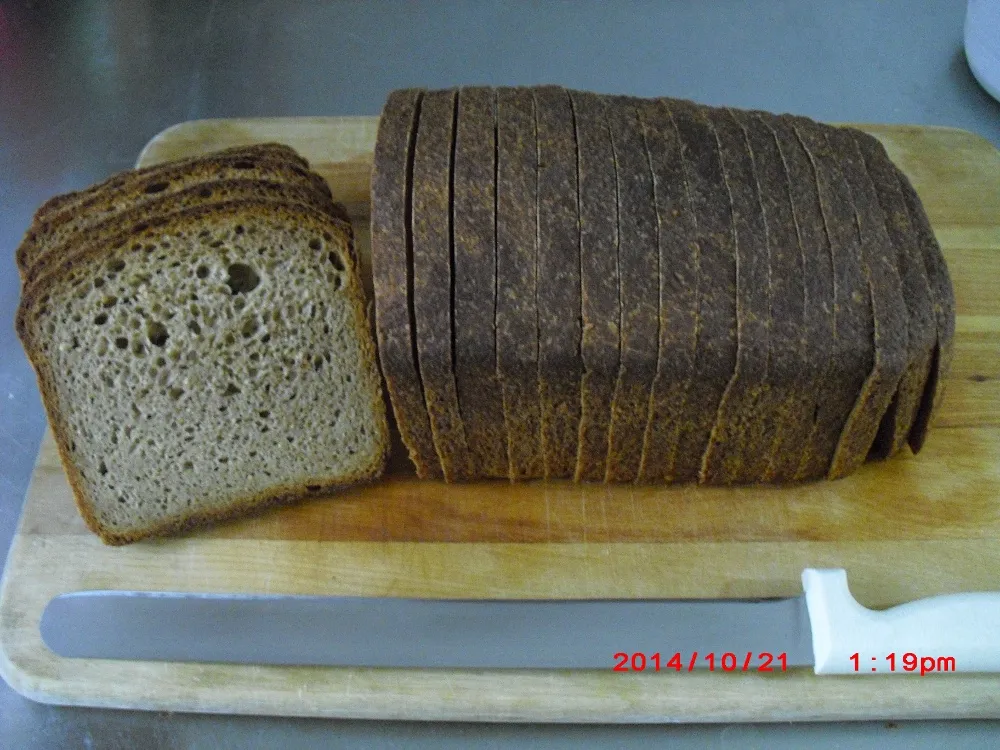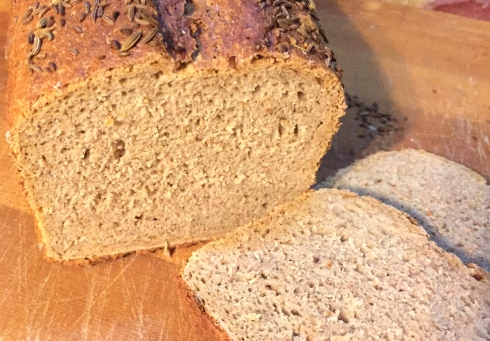It's a brick

And how!
50% sprouted wheat (commercial) and 50% BF, 80% hydration, 20% starter (100% hydration), 2% salt, 12% sprouted grain. 40 minute autolyse (flours and water only), slap and folds x 6, 1 and 1 minutes, then 3 sets of stretch and folds at 20-30 minutes apart. The dough was beautiful, smooth, supple, elastic.
Covered and into the refrigerator for the night, where it rose maybe 50%. Pulled it out and cranked the oven to the max (500 F+) to preheat while I preshaped, then shaped a tight boule.
- Log in or register to post comments
- 6 comments
- View post
- nmygarden's Blog







